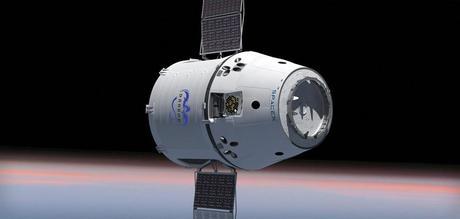 For explorers and adventurers wandering into remote regions of the planet, satellite phones and data transmitters are the lifeline that allows them to stay in contact with the rest of the world, while also sharing updates on the progress of their expeditions. But today's satellite networks are aging rapidly, and are quickly becoming outdated. While they still handle voice calls fairly well, they lag far behind in data speeds. But two forward-thinking billionaires are in the planning stages for their own independent projects which will bring faster, more reliable voice and data coverage to the entire planet, and considering the track records of both of these gentleman, I wouldn't bet against either of them.
For explorers and adventurers wandering into remote regions of the planet, satellite phones and data transmitters are the lifeline that allows them to stay in contact with the rest of the world, while also sharing updates on the progress of their expeditions. But today's satellite networks are aging rapidly, and are quickly becoming outdated. While they still handle voice calls fairly well, they lag far behind in data speeds. But two forward-thinking billionaires are in the planning stages for their own independent projects which will bring faster, more reliable voice and data coverage to the entire planet, and considering the track records of both of these gentleman, I wouldn't bet against either of them.The first new satellite communications venture is being spearheaded by Elon Musk and his SpaceX program. Musk, who also runs electric car company Tesla Motors, and his researching building a high-speed train called HyperLoop, has announced plans to build a network consisting of hundreds of satellites in low-Earth orbit that would provide high speed data connections to the entire planet. The project is expected to take about 5 years to complete, and cost around $10 billion, but because the communications satellites will be at a relatively low altitude (750 miles up), they'll be able to exchange data at a far faster rate than current systems, which are as high as 22,000 miles.
Musk says that this project won't just benefit people on Earth however. He sees it as a stepping stone for what he eventually envisions as a permanent colony on Mars as well. That may seem far fetched at the moment, but considering the leaps that SpaceX has made in recent years (the company is one of the contractors that delivers supplies to the International Space Station), and their ambitious plans for the future, it doesn't seem completely out of the realm of possibility down the line.
Meanwhile, another rich visionary who has designs on the commercial space travel market is Richard Branson, who also has revealed similar plans for his own satellite communications network. The Virgin Galactic founder says he would also like to use his fledgling company to launch a network of low-orbit satellites as well, with the same aim of bringing improved communications and high speed data to the planet.
The concept would be to use Virgin Galactic's SpaceShipTwo aircraft to launch small payloads carrying satellites that way about 500 pounds into orbit. This would be a far more efficient and cost effective way of getting those devices into space, and would speed up the time table dramatically. The problem is that the project took a step backwards with the recent crash of SpaceShipTwo, which claimed the life of a test pilot. Branson says he is committed to the concept none the less, and he hopes to begin deploying the first of these satellites in the next few years.
While both of these programs will obviously take some time to come to fruition, the payoff could be huge for our ability to say in contact while in remote areas. The fact that they'll include high speed data means that voice and video communications will improve dramatically, and likely drop in price when compared to current satellite offerings. But the traditional satcom companies like Iridium aren't exactly resting on their laurels either. Several have announced plans for their own next generation satellite systems which will hopefully deliver on the promise of faster performance as well.

